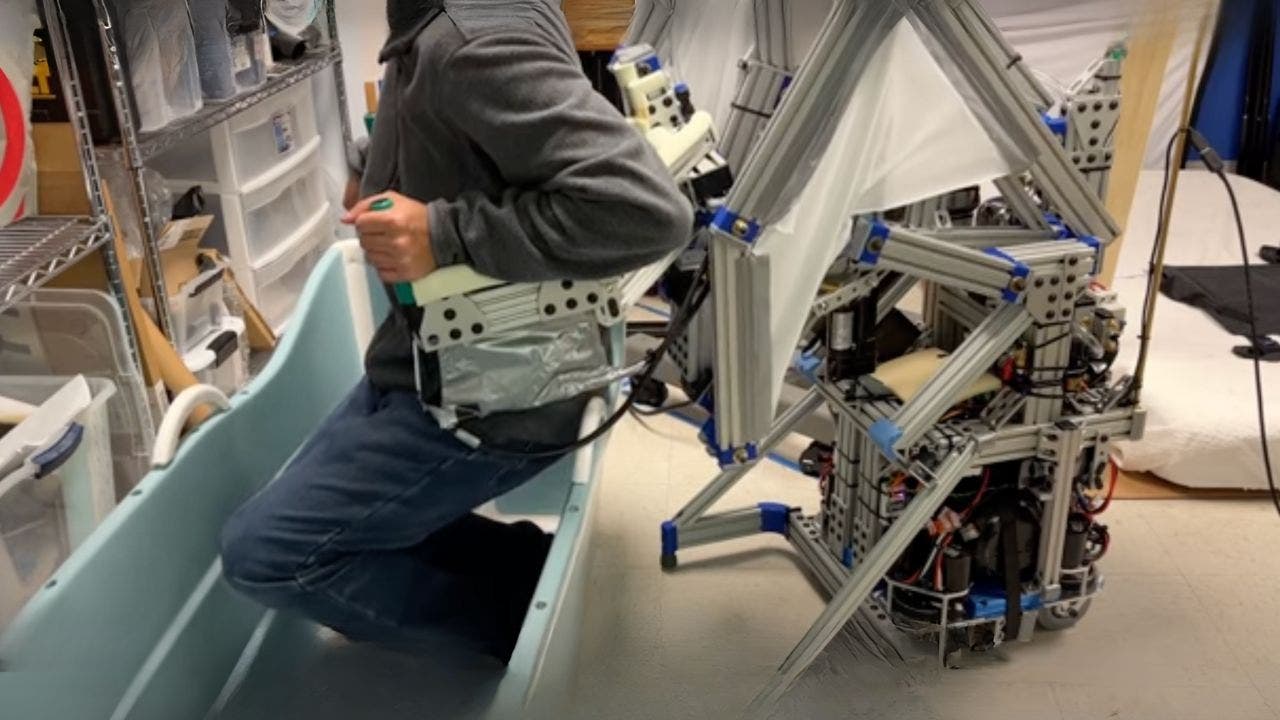MIT’s E-BAR robot helps prevent falls as US senior population grows rapidly

The demographic landscape in the U.S. is rapidly changing, with the median age now at 38.9, almost a decade older than it was in 1980. By 2050, the population of adults over 65 is projected to surge from 58 million to 82 million, highlighting the urgent challenge of eldercare. Falls remain the top cause of injury among older adults, underscoring the need for innovative, tech-driven solutions.
MIT engineers have risen to this challenge with the development of E-BAR, a mobile robot designed to physically support seniors and prevent falls as they navigate their homes. Unlike traditional assistive devices that can be cumbersome or stigmatizing, E-BAR operates as a set of robotic handlebars that follow users from behind. This allows individuals to walk freely, lean on the robot’s arms for support, or receive full-body assistance when transitioning between sitting and standing.
The engineering behind E-BAR’s mobility is impressive, with a meticulously designed 220-pound base that supports the weight of an average adult without tipping or slipping. Its omnidirectional wheels enable smooth navigation through tight spaces and around household obstacles. The robot’s articulated body, constructed from 18 interconnected bars, mimics the natural movement of the human body, providing a seamless and intuitive experience.
What sets E-BAR apart is its integrated fall-prevention system. Each arm is embedded with airbags made from soft, grippable materials that can inflate instantly if a fall is detected. This rapid response cushions the user without causing bruising, and it does so without requiring the user to wear any special gear. In lab tests, E-BAR successfully supported elderly volunteers as they performed everyday tasks that often pose a risk for falls.
Currently operated via remote control, the MIT team is working on automating E-BAR’s navigation and assistance features. The vision is for future versions to autonomously follow users, assess their real-time fall risk using machine learning algorithms, and provide adaptive support as their mobility needs evolve.
E-BAR prioritizes dignity, usability, and independence for older adults, with a design rooted in extensive interviews with seniors and caregivers. The U-shaped handlebars allow for a natural stride and easy exit at any time, while the robot’s slim profile and home-friendly design make it a practical addition to any household.
While E-BAR is still in the prototype stage and not yet available for consumer purchase, the MIT team is continuing to refine the design with the goal of bringing it to market in the coming years. As the technology evolves, E-BAR has the potential to revolutionize eldercare, providing seamless, continuous support to empower seniors to live safely and confidently in their own homes.
In conclusion, E-BAR represents a significant advancement in the field of eldercare, offering a unique combination of mobility assistance, fall prevention, and user autonomy. As the technology continues to develop, it has the potential to transform the way we care for older adults, making everyday life safer and more manageable for everyone involved.




